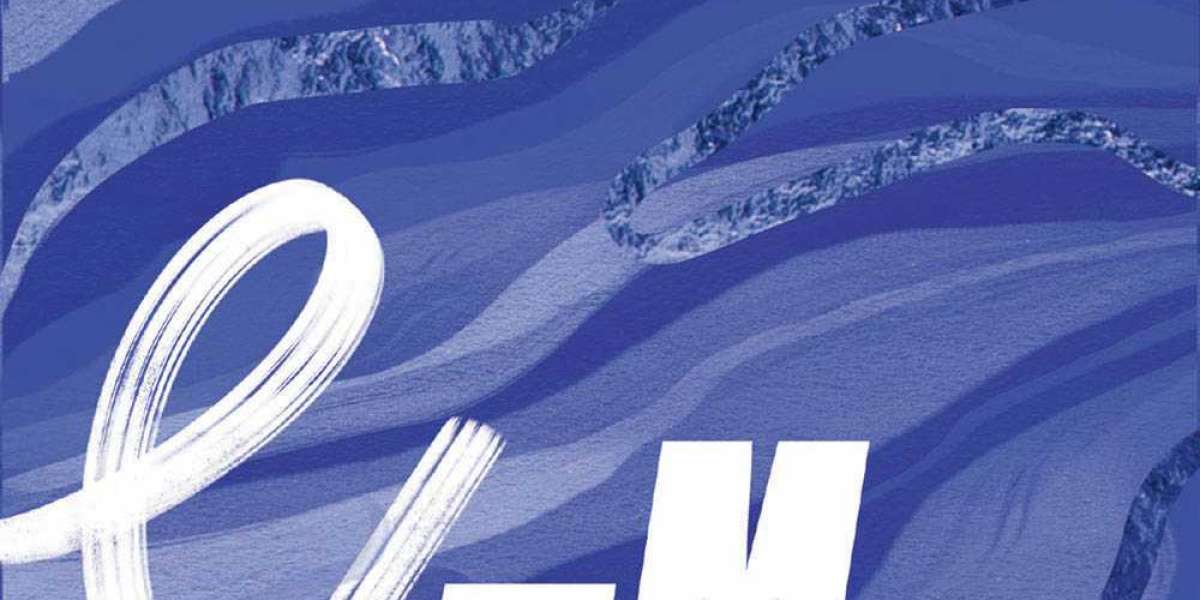Clean, smooth stitching depends on a clear understanding of how Embroidery Digitizing works and the techniques professionals use to prepare designs for machine stitching. While great artwork helps, the actual quality of the stitched output relies heavily on how well the design is digitized. Every stitch type, angle, sequence, and density decision affects the final result on fabric.
This detailed guide explains the techniques professionals use for smooth stitching, balanced density, sharp detailing, and reliable production-quality outcomes. Whether you're new to the craft or improving an existing workflow, these methods help you create designs that run efficiently on any embroidery machine and deliver consistent results.
Understanding the Foundation of Smooth Stitching
Clean Stitching Starts With Proper Artwork Preparation
Good stitching doesn’t begin in the machine; it begins with the artwork. Professionals refine the artwork before digitizing. Important steps include:
Removing unnecessary details that won’t stitch clearly
Increasing line thickness for visibility
Simplifying shapes for stitch-ready translation
Adjusting contrast for accurate path creation
These early refinements prevent issues like thread breaks, cluttered fills, and unbalanced outlines.
Choosing the Right Stitch Type for Each Element
Smooth stitching requires choosing stitch types that suit the design:
Satin stitches for thin letters, borders, and curved elements
Fill stitches for large, solid areas
Run stitches for fine outlines, travel lines, and minor details
Using the wrong stitch type causes distortion, density problems, and poor clarity.
Essential Embroidery Digitizing Techniques for Smooth Output
1. Proper Density Control
Density determines how tightly stitches sit together. Too high leads to thread breaks; too low causes gaps. Professionals maintain density appropriate to:
Fabric type
Thread weight
Stitch type
Design size
Density adjustments are made section-by-section, not globally. This ensures smooth fills and consistent coverage without stressing the fabric.
2. Correct Underlay Selection
Underlay is the hidden foundation of every embroidery design. It stabilizes the design and sets the stage for smooth top stitching. Common types include:
Edge-walk underlay: For outlines and satin borders
Zigzag underlay: For raised satin textures
Tatami underlay: For large fill areas
Correct underlay prevents puckering, distortion, and misalignment.
3. Proper Pathing and Sequence
Pathing defines the order in which sections stitch. Sequence determines:
Registration accuracy
Thread optimization
Clean finish
Good pathing avoids jump stitches and reduces the number of trims, creating a smooth, machine-friendly workflow.
4. Angle Adjustments for Smooth Texture
Stitch angle variations help maintain natural flow and reduce visible patterning. Professionals modify angles to:
Improve coverage
Reduce fabric tension
Add texture control
Enhance light reflection
Incorrect angles create uneven surfaces and texture imbalance.
5. Pull Compensation for Accuracy
Fabric moves during stitching. Pull compensation offsets that movement. Without it, letters appear thinner, shapes distort, and outlines lose accuracy. Professionals expand or contract stitch segments to maintain the design’s original dimensions.
6. Avoiding Excessive Stitch Length
Long stitches cause snagging and looping, while overly short stitches create unnecessary machine stress. Professionals balance stitch length during:
Fills
Satins
Runs
Adjusting stitch length ensures that the design remains smooth and consistent.
7. Layering Techniques for Balanced Detailing
Layering is important for multi-color or multi-section designs. Smooth stitching relies on:
Stitching background sections first
Adding details afterward
Avoiding heavy stitch overlap
Proper layering creates clearer edges, richer textures, and more professional results.
Advanced Techniques Used by Professionals
Feathering and Edge Softening
Some artwork requires smoother transitions between shapes. Feathering is used to blend stitch edges in a way that imitates shading. It avoids sharp transitions and creates depth while preventing harsh texture.
Variable Density Techniques
Instead of keeping density uniform, professionals adjust it gradually across a surface. This technique:
Reduces fabric stress
Prevents stiff patches
Enhances visual smoothness
It is especially useful for gradient-like stitching.
Smart Division of Large Areas
Large fill areas are divided to prevent:
Thread breaks
Excessive tension
Directional inconsistencies
Breaking fills into smaller, manageable segments ensures the surface stays clean and even.
Stitch Shortening in Curved Areas
Curved stitching requires precise control. Shortening stitch lengths in curves leads to:
Smoother arcs
Better texture
Reduced distortion
This is essential for letters, circular shapes, and borders.
Fabric-Specific Digitizing Techniques for Smooth Stitching
Digitizing for Stretch Fabrics
Stretch fabrics require lighter density and stronger underlay to prevent distortion. Techniques include:
Edge-walk underlay
Reduced satin density
Longer stitches in fill areas
These adjustments prevent warping and ensure clean results.
Digitizing for Thick Fabrics
Thick materials like jackets or caps require heavier underlay and slightly increased pull compensation. The goal is to allow the thread to sit above the surface rather than sink into the fabric.
Digitizing for Light Fabrics
Delicate materials easily pucker. Techniques include:
Very light density
Minimum underlay
Careful angle selection
This preserves fabric integrity while still achieving smooth stitching.
Why Professionals Get Superior Stitch Quality
Professionals use their experience with:
Thread behavior
Fabric reactions
Machine tolerances
Sequence logic
Density settings
This gives them the ability to create designs that run smoothly without trimming errors, thread breaks, or distortion. They also use the latest techniques offered by Best Embroidery digitizing services, ensuring consistency even on complex multi-layer artwork.
How Embroidery Digitizing Influences Stitch Output
The role of Embroidery Digitizing extends far beyond converting an image. It influences:
1. Stitch Precision
Accurate stitch placement leads to neat borders, smooth fills, and clean edges.
2. Machine Efficiency
Optimized pathing reduces:
Machine stops
Unnecessary jumps
Thread cuts
This results in smoother production and fewer errors.
3. Durability of the Finished Design
Correct density and underlay enhance stitch longevity and reduce unraveling.
4. Fabric Stability
Proper compensation and stabilization ensure the fabric remains flat, helping maintain clean stitching.
Step-by-Step Breakdown of Smooth Digitizing Workflow
Step 1: Import Artwork and Clean It
Remove excess details, sharpen edges, and prepare the file for accurate tracing.
Step 2: Create Stitch Paths
Divide artwork into segments and assign the correct stitch types.
Step 3: Apply Underlay
Prepare the foundation for every segment.
Step 4: Adjust Density
Set appropriate density based on fabric, thread, and design scale.
Step 5: Set Angles and Compensations
Modify angles to improve smoothness and apply pull compensation to maintain shape.
Step 6: Add Finishing Details
Complete fine outlines, highlights, and small elements with run or satin stitches.
Step 7: Sequence and Optimize
Reduce jump stitches, trims, and unnecessary movements.
Step 8: Test and Refine
A sample run helps identify issues like puckering, distortion, or density imbalance.
The Role of Modern Technology in Stitch Smoothness
Automation helps beginners, but professionals still manually refine every area. Advanced tools offer:
Precise stitch simulation
Fabric behavior prediction
Automatic compensation suggestions
Smooth angle mapping
Still, the best results come from technique-based experience and correct artistic decisions. This is why Embroidery Digitizing remains a skilled process requiring both software knowledge and practical stitching understanding.
Conclusion
Smooth, clean stitching depends on correct planning, proper technique, and an understanding of how stitches interact with fabric. Professionals achieve reliable results because they apply the right density, underlay, angles, compensation, and sequence for every unique design. By mastering these techniques, anyone can achieve production-quality outcomes that run efficiently on embroidery machines. For consistent results across any design style, working with experienced experts or services like Emdigitizing ensures dependable, high-quality outputs every time.
FAQs
Q1. What technique matters most for smooth stitching?
Density control and correct underlay selection are the two most important factors for clean results.
Q2. Why do designs pucker during stitching?
Puckering happens due to high density, poor compensation, incorrect stabilizer, or lack of underlay.
Q3. Which stitch type is best for small letters?
Satin stitches produce the cleanest and smoothest results on small lettering.
Q4. How does pathing affect stitch output?
Good pathing reduces jumps, trims, and registration issues, leading to cleaner finishes.
Q5. Is testing necessary before final production?
Yes. A test run ensures the density, angles, and compensation work correctly for the chosen fabric.







